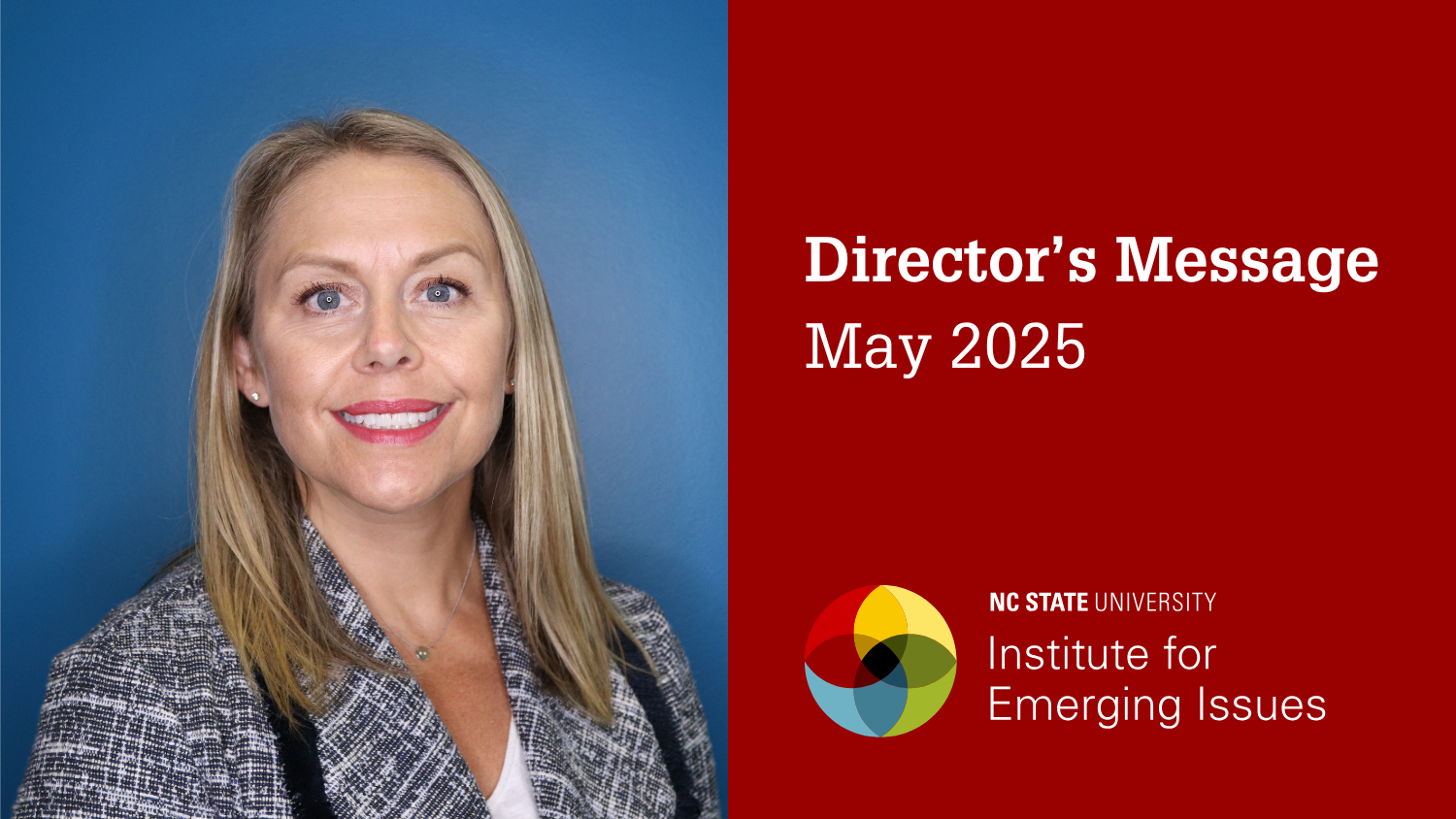Director’s Log | February 2020
 A Bit of a Choice
A Bit of a Choice
0 or 1. At the end of the day, every line of every piece of code comes down to that. Yes or no. A or B. And slowly from that we have built a miraculous set of tools that have galvanized our economy, connected our world in ways we could never have imagined a generation ago.
As North Carolina builds out its digital infrastructure, we have a 0 or 1 decision to make as well. Do we want everyone to have a real chance to take advantage of this tool?
At the Emerging Issues Forum, ReCONNECT to Technological Opportunity, earlier this month in Raleigh, we checked in on the remarkable progress the state is making in extending high speed internet capacity to every nook and cranny of the state. But when we looked at who’s using it, we found a lot of people left behind. A greater percentage of people in rural NC aren’t subscribing to high speed broadband services. More total people, mostly lower-income folks, aren’t subscribing in our cities. Add it up, and just 59.4% of people across the state who have an opportunity to subscribe to broadband are doing so.
We learned there are three main reasons for this: cost, devices and knowledge. Some people can’t afford the cost. Others don’t have a device at home that would enable them to use it properly. And still others don’t know how to use the technology once they have it.
And that’s a challenge for all of us. If 40% of our children can’t do their homework at home and 40% of our adults don’t have the ability to work from home or take courses online or to apply for jobs, and 40% of us can’t take advantage of broadband to connect us to friends and entertainment and health, that hurts our quality of life and our economy now and shrinks opportunity for our future generations.
“Digital inclusion” is a name for the idea that as we build out high speed internet access in the future, and as that access becomes increasingly a minimum requirement to participate in our economy, we need to ensure that all parts of our society, rich and poor, rural and urban, are included.
If the 40% aren’t included, we’ll be a state trying to compete with 40% of its brain tied behind its back.
We can’t afford that.
At the conference, we kicked off a statewide effort to encourage every county in the state to describe how they are going to afford to reach out to those who are not yet connected by creating a “digital inclusion plan.” Those plans might take on cost issues. They might outline how we get more devices into homes. They might lay out a strategy to show people how to take full advantage of the technology.
Interestingly, we faced a very similar challenge in the 1930’s, as some people wrestled with the question of whether they wanted to be connected to electricity in their homes. After all, candles were working fine. The icebox wasn’t so bad. It took a creative effort from electric cooperatives to make the case for how much better life could be with this new technology.
When it comes to digital inclusion plans, the co-ops are stepping forward again. At the Forum, the Roanoke Electric Cooperative and North Carolina’s Electric Cooperatives (the state association) stepped forward to start a fund offering $5,000 to counties developing digital inclusion plans so that those counties can take the first steps toward implementing them. We are looking for more companies and foundations to join them so that the program can reach across North Carolina.
It’s a 0 or 1 choice. Do we want everyone in the state to have a chance to participate in our digital economy or not? I think we do. Let’s get started.
- Categories:


